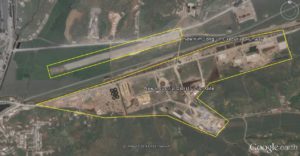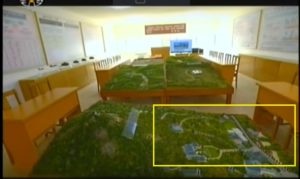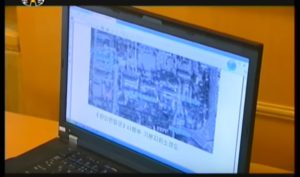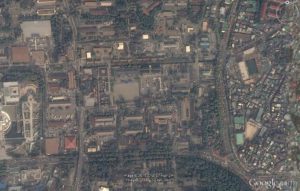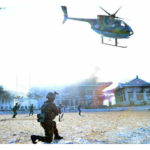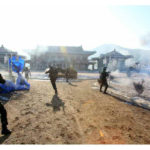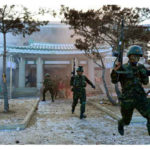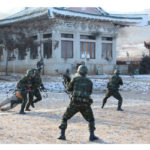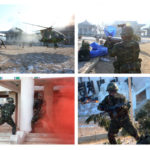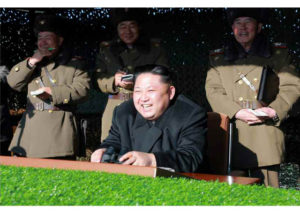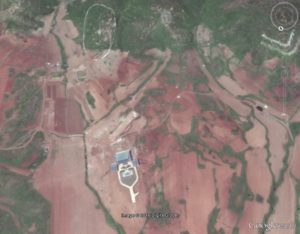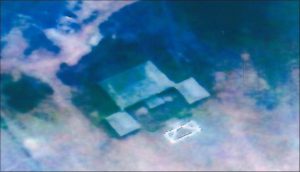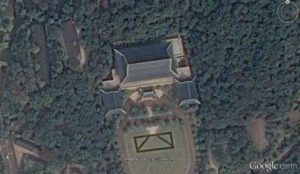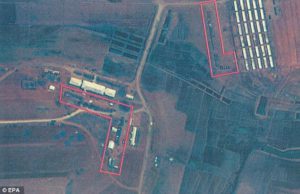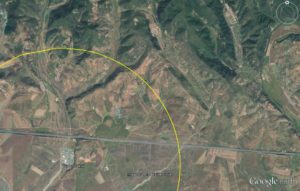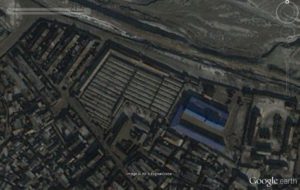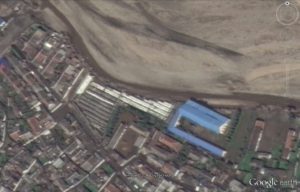By Benjamin Katzeff Silberstein
The other day, South Korean think-tank KINU (Korean Institute for National Unification) reportedly claimed that North Korea has 404 official markets in total. As Curtis Melvin has already pointed out on twitter, the real number is actually higher, but all this depends on what precise definition you use of markets (institutionalized and government recognized, versus operating in a legal gray zone, et cetera). As this report by the U.S.-Korea Institute laid out last year – also using satellite imagery, like the KINU report does – markets have grown significantly in size since the early 2000s.
The more interesting figures, in my opinion, are KINU’s estimates for what the markets actually generate in terms of income for the government, and how many people they employ. Below, I place these figures in a comparative perspective within the economy as a whole, and discuss the proportional weight of the markets in the North Korean economy. But first, some of the usual caveats:
As with any figures relating to the North Korean economy, a great deal of caution must be exercised in approaching these numbers. It would seem nearly impossible, for example, to accurately calculate the number of people employed by the markets. In theory, this should not be that hard. Using Google Earth, you can measure, with a fair degree of accuracy, the size of the trading grounds, and knowing the rough size of the average market stall in a North Korean market and how many people work in each one, getting a rough number for the amount that they employ should not be impossible. It would be a very rough estimate but arguably that is better than nothing. But in practice, it would still not give the full story of how many people work in the markets, since many people work there part-time, at least according to (possibly outdated) anecdotal evidence.
Moreover, it is important to remember that the market system is not the entire private sector – many other types of exchanges and transactions go on in the North Korean economy, not all recognizable from above, in complexes such as residential buildings and the like, where small business have been known to operate from. So any number for government revenues, it is important to bear in mind, will only be an estimate (again, a very rough one) for the specific type of markets that KINU has recorded. KINU does not seem to have made its report available online yet – perhaps their methodology is laid out clearly enough to answer some of these questions.
What do the numbers tell us?
Still, the numbers are interesting as starting points for a broader analysis of the proportions and size of the North Korean economy. Starting with the number of individuals employed within the market system, KINU puts the number at 1.1 million. This is about 1/25 of the entire population of the country, as derived from the 2008 census. Table 34 (page 187 and onward) gives the total working-age population as approximately 17.37 million. Subtracting the share of the population listed as “studying,” we get around 16.4 million. Further subtracting the share of the population listed as “retired,” which arguably we shouldn’t do since elderly North Koreans are known to be significantly involved in market activities, we get approximately 13.3 million individuals. I do not subtract the share listed as “doing housework” simply because it seems far too unlikely that such a category in North Korea would really be excluded from the market labor force.
Just assuming as a theoretical experiment that KINU’s figures and the census numbers are accurate, we get a 7.5 percent share of people employed in the official market sector. In reality, the share may well lower since many people in the demographic groups subtracted are known to be involved in market activities. Conversely, it may be higher if KINU’s number does not take part-time workers into account or otherwise underestimates the number of market workers. Wheher or not one thinks this to be a high or low number is a matter of perspective. For comparison, the share of the labor force employed in retail trade in the United States was 10.2 in 2014.
Another interesting figure KINU gives is that for government revenue from the markets. Again, this, too, should not be hard to estimate in theory: if you approximate the amount of market stalls through satellite imagery and multiply the amount by the fee paid by each trader to the government, it shouldn’t be impossible to get a rough estimate for how much the trade brings the government. But of course, here, too, complications abound: when looking at markets from above, it is nearly impossible to determine exactly how large the actual trading grounds are, for example, and how much is made up of administrative and storage facilities. Still, an approximate estimate is immensely valuable as a starting point for a broader debate.
According to KINU, the North Korean government collects between $13 and $17 million per day in fees from market traders. Ever since 2003, the North Korean market regime has become increasingly formalized and incorporated into the official economy. This trend has reportedly continued under Kim Jong-un as well, and arguably accelerated during his tenure. This is clearly a wise move from a policy perspective: the government needs the markets and it needs the revenue, and their depiction as a threat to the regime may not be the full story.
Using the low number of $13 million gives us a figure of $4.7 billion in revenue per year, while the higher figure of $17 million gives $6.2 billion per year. Both the low- and the high-end estimates would put government revenues from market fees at a significantly higher figure than, for example, North Korea’s trade with China. In 2015, for example, North Korea’s exports to China estimated a total of $2.95 billion. The latest sanctions additions are estimated to take off around $700 million from North Korea’s export incomes. It is important to remember that even if they were to accomplish that, which remains doubtful, North Korea still has a domestic economy that matters greatly too. And remember – these are only estimated (estimated!) figures for government revenue from a specific type of market. They do not represent the entire private sector in North Korea.
So, while the role of exports should not be underestimated, it is important to remember that North Korea has a domestic economy of considerable size. Perhaps whatever pressure the sanctions applies on the North Korean economy could serve as an argument for those in the policy bureaucracy pushing for economic reforms that could further let the private economy develop.
